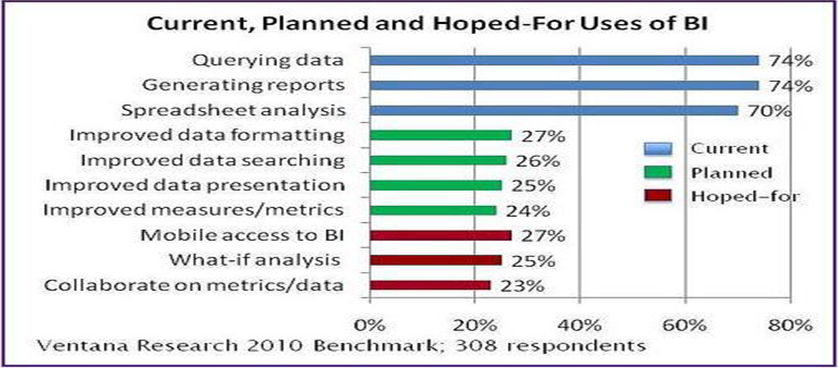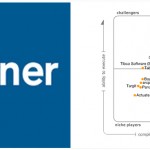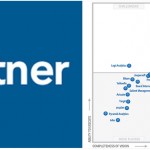The interplay between Business Intelligence and Performance Management in today’s organizations
Many business users still rely today on spreadsheets, presentations and e-mail as their tools for information and analysis, despite major investments in technology and their willingness to manage or improve organizational performance.
A new study by Ventana Research, “Business Intelligence and Performance Management for the 21st Century“, reveals that these desktop productivity tools obstruct efficiency and effectiveness when used in enterprise processes.
The Findings
Ventana Research undertook this benchmark research to assess the current state of maturity, trends and best practices. The goal was to determine how organizations approach Business Intelligence (BI) and performance management and prioritize their key components by identifying what elements they desire in a comprehensive approach.
The research found strong interest in a growing demand for BI and performance management. Departmentally, the most growth in adoption of BI tools to support performance management has been in Operations (51%), Finance (50%) and Customer Management (49%).
However, the research paints a picture of a market in an early stage of development. It shows that most organizations face considerable obstacles. They have only basic BI capabilities such as:
- querying sources for specific data (74%),
- generating reports from data (74%)
- accessing data from a spreadsheet for further analysis (70%).
Moreover, the capabilities they currently are working to deploy are only somewhat more sophisticated:
- communicating data in the right format (27%),
- searching for data (26%),
- presenting data effectively (25%)
- creating measures and metrics (24%).
Organizations are aware that more advanced capabilities exist; the ones our participants said most often that they hope to establish are being able to access data via a mobile device (27%), to conduct what-if analysis (25%) and to collaborate on data and metrics (23%).
The research shows that lack of resources (60%) and lack of a budget (43%) are the two most common barriers to improving BI and performance management. A significant percentage of the participants said that in the next year or two they will choose hosted software managed off-site, or rented software as a service (SaaS), as the means of deploying such software.
These methods can be more economical than the traditional on-premises deployment and require fewer in-house resources such as hardware and IT staff.
What To Do Next
According with the research, organizations can follow a series of steps as presented below:
1. Assess your organization’s maturity in BI and performance management.
2. Consider the effectiveness of your current tools and applications.
3. Reduce the number of BI tools and the use of spreadsheets.
4. Compare the BI capabilities you have with those you want.
5. Determine whether products currently in use can handle performance management well.
6. Identify the types of data you need to access and analyze.
7. Consider adopting or expanding metrics for performance management.
8. Address organizational barriers to improving BI and performance management.
9. Look into alternative means of software deployment
10. Examine software that can be deployed across roles in the enterprise.
References:
Image Source:- UBM TechWeb Reader Services, 2010

Tags: Business Intelligence, Report Analysis, Ventana Research





